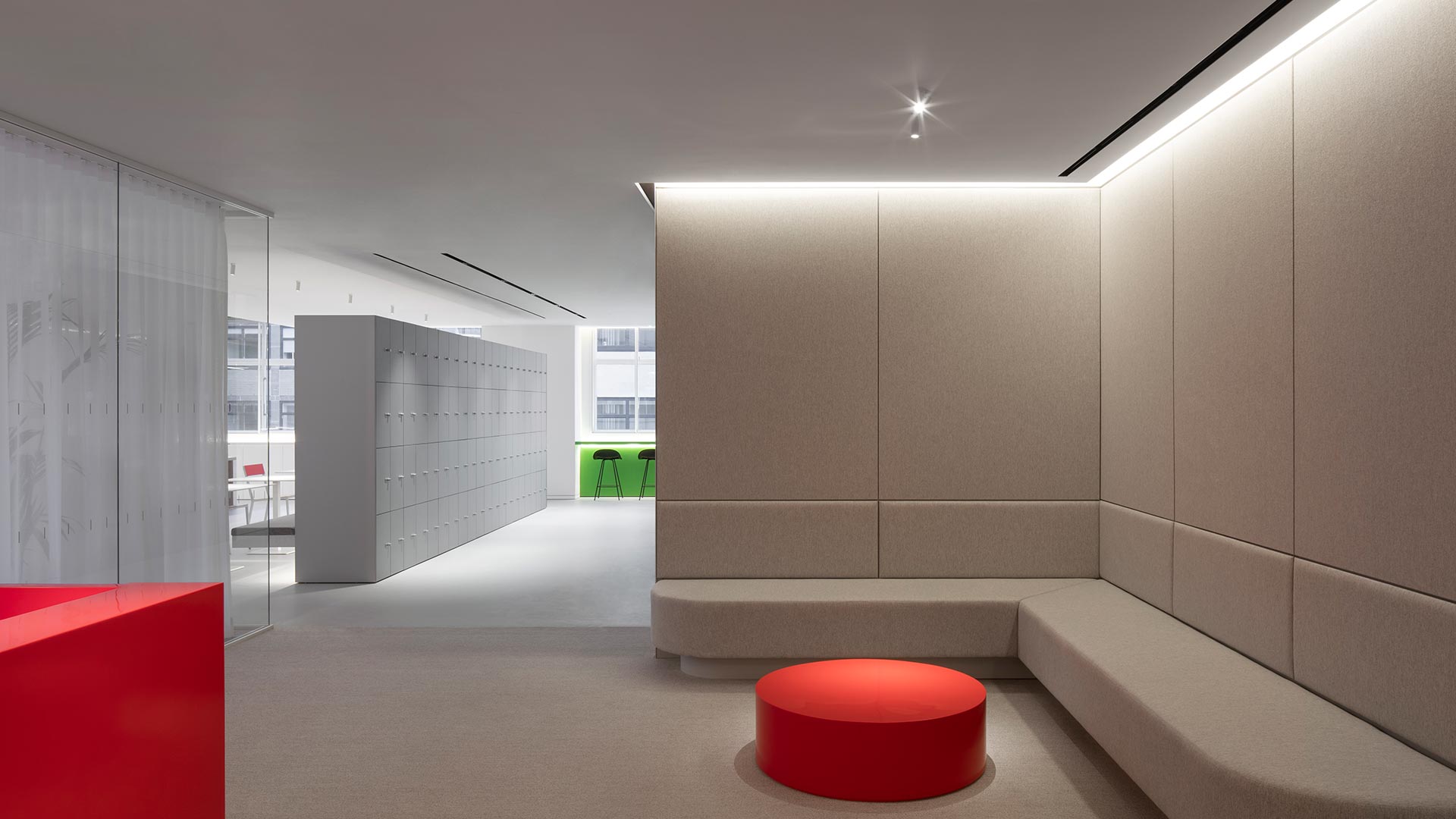Let there be light
Like the natural world where organisms coexist in an interacting ecosystem, biophilic design is the sum of many interconnected parts. It’s a design philosophy that encompasses so much more than green walls and a discipline that goes beyond any one single thing. Textures, shapes and materials all contribute to the experience.
Lighting, acoustics and scents all work together to support an overriding vision. This need for a full multisensory mix, means that a lighting designer can’t exist in isolation.
Defining the role that biophilic lighting can play in the workplace is best understood when we take a step back and appreciate how things have shifted in this sector. Post-pandemic, we’re increasingly seeing people choose where and how they want to work. Workplace design is evolving as a result, borrowing principles from the world of hospitality in the process. Here, wellbeing is everything, emotion sets the tone and it’s all about offering a holistic experience that prioritises people over place.
Lighting for plants
Biophilic lighting principles should take into account the needs of all occupants of a space, including the plant life. It’s well-documented that clusters of greenery can have a positive effect on the workplace, helping to clean the air and offering a direct link to nature, but there’s no point in adding hundreds of plants if no one has considered how they will be illuminated. While pot plants and succulents are fairly easy to introduce, green walls require a high level of exposure to natural daylight to thrive. In reality, it takes a considerable number of Watts to light a vertical surface, so the implementation of a green wall can end up being counterintuitive to the sustainability credits a building is looking to achieve – unless done well.

Lighting for people
Workplace lighting has historically been flat and one-dimensional. Think offices with a standardised grid of 600mm ceiling panels, chosen to achieve a specific Lux level on a desk. What you’re left with is a flat and over-illuminated environment that offers nothing in the way of comfort and wellbeing for the occupants of the space. What’s missing from these schemes are the gradations of tone that we experience as light changes throughout the course of a day. Biophilic lighting attempts to replicate these subtle shifts, by using layers of light to create something much more dynamic.

Whilst we can never replicate the full range of daylight in all its glory, we can attempt to mirror the interplay of light and shadow or emulate the shifts in colour and intensity that make the experience so rich. Natural light is one of the most important tenets of a biophilic design philosophy. It offers a tangible link to the outside, connecting the building’s occupants to the natural world to support wellbeing, helping to reduce stress and increase productivity. In the absence of frequent exposure to natural light, artificial light can be considered in a number of ways. It can be used to achieve layers of illumination, where different types of light – direct and indirect, diffuse and dynamic light – mimic daylight patterns.
Lighting for freedom of choice
Flexibility is the new benchmark in the biophilic office space. There are no straight lines in nature, so it’s illogical to think that a living and breathing workplace should follow a conventional path. The open plan format doesn’t suit everyone in the era of personal choice, so flexibility needs to be built into workplace lighting design to cater for a mix of cellular and communal working spaces.
A biophilic approach to lighting can come into play in the workplace by creating the sense of an aesthetic that is seemingly fluid, where things feel visually and emotionally changeable. Light is the one element that has the power to change the mood around the static objects that it comes into contact with. There’s arguably no other discipline that can influence behaviour in this way, which is why lighting design is having its moment in the workplace.
Published in the Journal of Biophilic Design
Read the full article here: Let there be light, Issue 1 – The Workplace, Page 59


